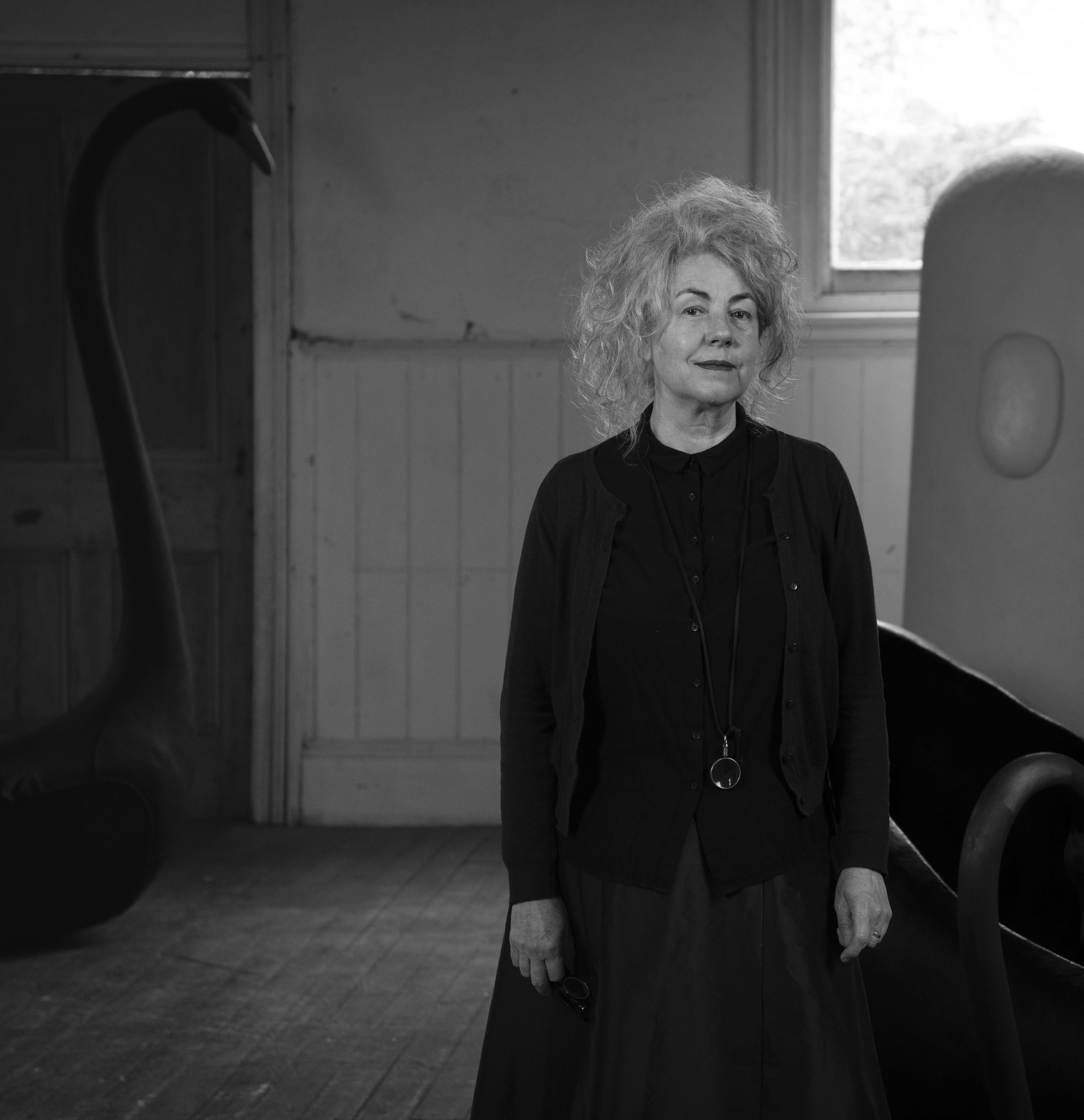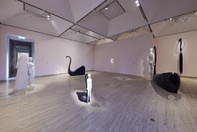Heather B. Swann
palawa/pakana Country, nipaluna/Hobart
2023
Displayed 2023 at Art Gallery of New South Wales

Heather B. Swann
Born 1961, palawa/pakana Country, nipaluna/Hobart.
Lives and works palawa/pakana Country, nipaluna/Hobart.
Heather B. Swann’s work is uncertain, exploratory, abstract; it is the means by which she finds her way into and out of the conundrum of being human in the 21st century. Through sculpture, drawing, painting, and performance, Swann articulates the anxieties and the pleasures of our existential condition, inventing and animating figures in the process of becoming, figures experiencing physical or emotional stress, figures convulsed by delight. Meticulously worked, drawing both on the intimate, somatic realities of her own body and on the complex mythologies and histories of the European tradition, Swann’s art is at once emotionally uncomfortable and aesthetically bracing.
Photograph: Matthew Newton
Artist text
by Jane Clark
Artists and poets have been inspired by the ancient Greek myth of Leda and the Swan for centuries. To name only a few (and all of them men), there are Leonardo da Vinci, Michelangelo, Correggio, and Boucher painting erotic fantasy; Homer recounting history; Sidney Nolan exploring modernist abstraction; W.B. Yeats on the rape by a god of a ‘staggering girl.’ In fact this installation by Heather B. Swann, potently semi-eponymous, began as a response to Nolan’s Leda and Swan paintings from 1958 to 1960. (1) An artist residency in Athens during 2019 gave Swann the opportunity to study ancient objects at first hand, including painted Attic vases where swans are black, as in Australia, Cycladic carved figures of women that are almost translucent, and archaic Greek marble korai, idealised standing female figures whose enigmatic presence has been described as ‘poised containment.' (2)
She looked, she drew, she thought, she read: Homer, Robert Graves, Roberto Calasso – perhaps the most erudite and intriguing modern writer on classical mythology – and the great classicist Mary Beard on the perennial silencing of women’s voices. She learned that the Aetolian princess Leda, wife of the king of Sparta, was, as one telling of the story goes, impregnated by Zeus disguised as a swan, and fatefully birthed Helen of Troy among her hatchlings. A different version has as Helen’s mother the goddess Nemesis, another victim of rape by Zeus, with Leda her foster parent.
As Calasso explains, ‘myth opens out into a fan of a thousand segments’ the moment you try to grab hold. ‘And the Greeks became so used to hearing the same stories told with different plots that it got to be a perfectly normal thing for them.' (3) Nolan once remarked that myths are what art is for: ‘super-stories’ that our everyday mental processes can’t contain, yet are relevant to all humanity. (4) So Swann determined to tell Leda’s tale again, in her own poetic way, and three times over: with three naked female bodies – sensual, not erotic; three seductively beautiful swans; a louring, invasive prickly pear; and a human-headed Ouroboros devouring its tail in a cycle of violence. This is a story about force and consent, she says, which will be told ‘again and again and again until it changes.' (5)
There is a sense of pressure in this exquisite, seemingly calm mise-en-scène. ‘The eye of the storm, the calm at the centre,’ Swann says. (6) A shadow-swan almost nestles the ‘snowy neck’ of the smallest, youngest Leda. The tallest young woman has eyes embedded in her arm like an ever-watchful shield. The third Leda in Swann’s three stages of womanhood has eyes for looking behind. Her paired swan almost floats towards her, with ornithologically correct red beak and ruffled back feathers as disguise. From deep inside the largest swan, a black cloud of eyes stares out: all-seeing Nemesis. In Greek myth, Nemesis is one of the Necessities; she represents the inescapable. She is the distributor of justice.
Swann speaks to the need to stand your ground; so often on guard, so often fighting tooth and nail for equal measure.
(1) A first iteration of Swann’s installation was her exhibition alongside Sidney Nolan: Myth Rider, TarraWarra Museum of Art, 4 December 2021 – 6 March 2022, which covered the period 1955–66 when Nolan found parallels between Gallipoli and the Trojan War and its origins in the myth of Leda and the Swan; both curated by Anthony Fitzpatrick.
(2) This observation is from Natsume Sōseki’s novel Kusamakura (1906), trans. Meredith McKinney, Penguin Classics, London, 2008, p.37: ‘the energy of the human form held posed for action… All the dignity and solemnity to be found in the world lies hidden beneath this quality of poised containment’. Swann speaks of the deep influence on her work of Japanese art and writing.
(3) Roberto Calasso, The Marriage of Cadmus and Harmony (Milan, 1988), trans. Tim Parks, Penguin Classics, London, 2019, pp.139, 261.
(4) Quoted from Sidney Nolan, ABC TV, 10 November 1980, in Nancy Underhill (ed.), Nolan on Nolan: Sidney Nolan in his own words, Penguin, Melbourne, 2007, p.236.
(5) Heather shared with me drawings she made after returning from Athens, notes she made while the installation was at TarraWarra and extracts from her interview with Nikki van der Horst in 2021. She pointed me to two recent cinematic retellings of the story, Luca Guadagnino’s The Staggering Girl (2019) and Maggie Gyllenhaal’s The Lost Daughter (2021); and she patiently answered many questions.
(6) Conversation between the author and artist, September 2022.
Artist's acknowledgements
This project was originally developed for the exhibition Leda and the Swan, TarraWarra Museum of Art, 4 December 2021 – 6 March 2022, curated by Anthony Fitzpatrick.
Heather B. Swann is represented by STATION, Melbourne and Sydney.



